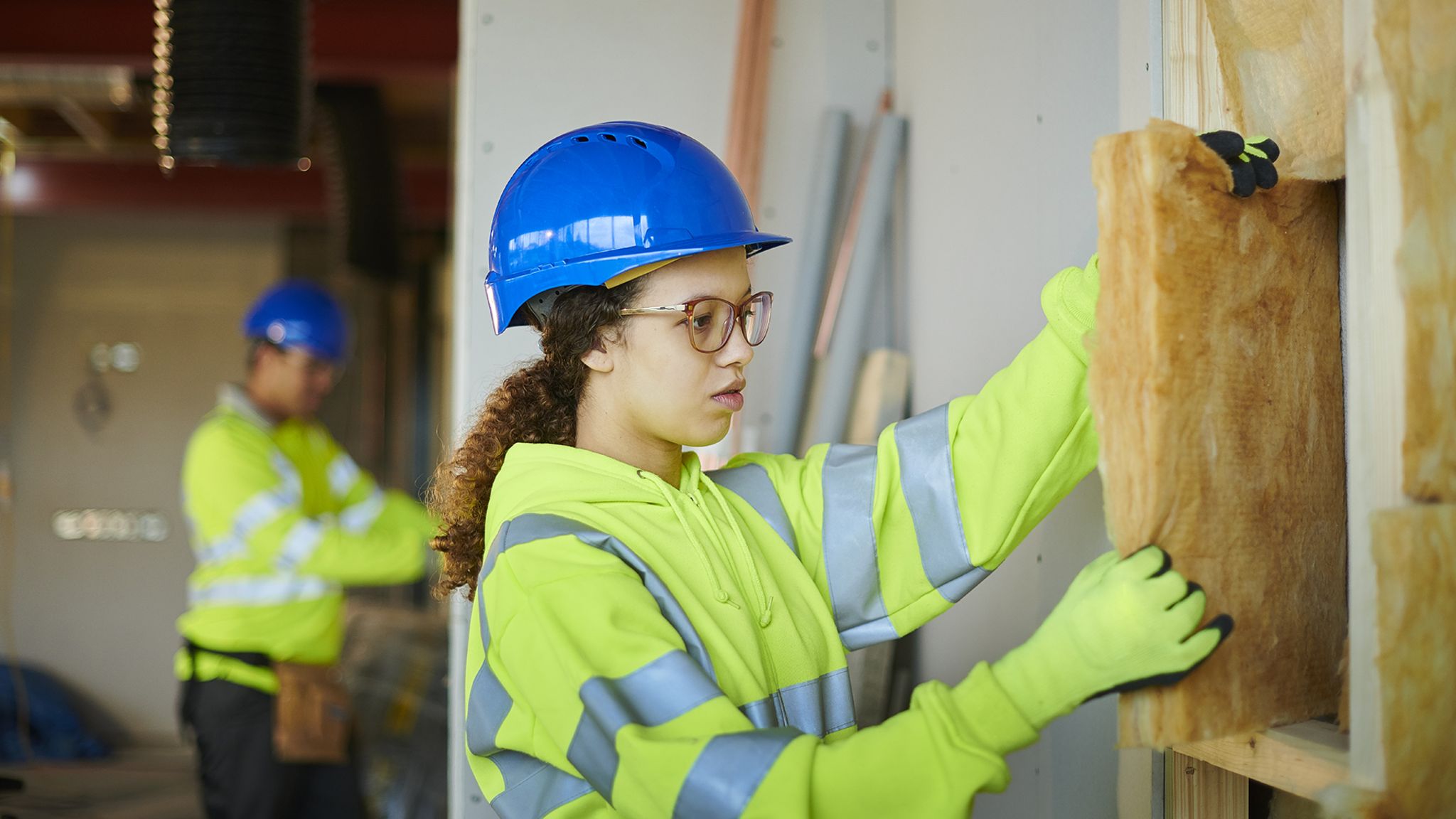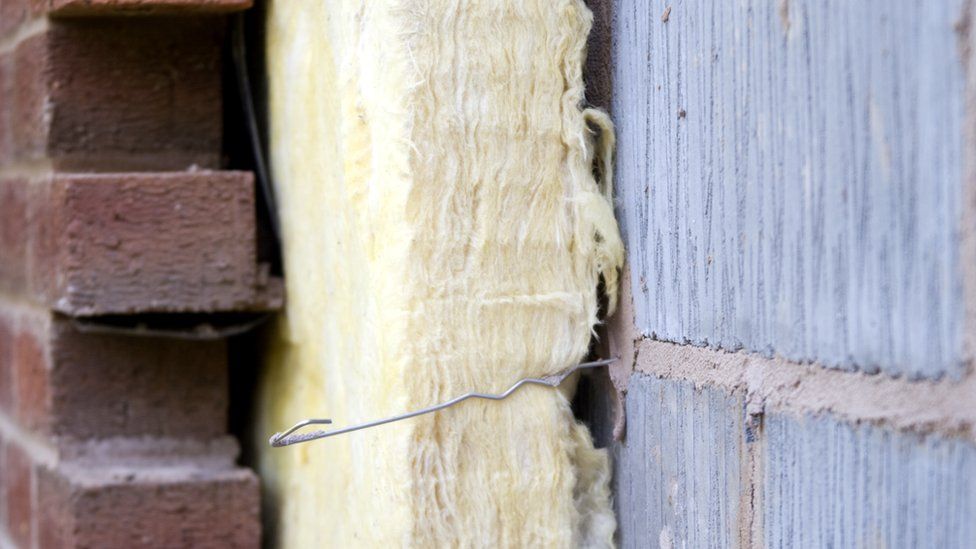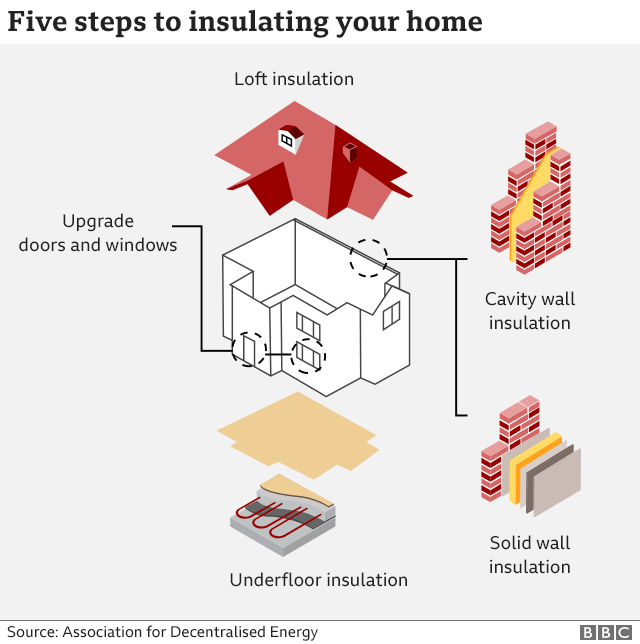What is insulation and how can it cut energy bills?

Energy bills are set to rise by 54% for many in the UK this April – and households in properties without proper insulation could be the worst hit, spending up to £246 a year more on their gas bills, according to the Energy and Climate Intelligence Unit (ECIU).
What is insulation and how can it cut bills?
Home insulation is the process of trapping heat inside a property, usually by covering areas exposed to the outside, such as roofs, floors and walls.
Without it, indoor temperatures can be hard to maintain, with homes losing up to 45% of their heat, according to the Energy Savings Trust.
The Energy Performance Certificate that comes with the sale or renting of a property will show how efficient it is.
But if the temperature drops very quickly after the heating is switched off, the home is unlikely to be properly insulated.
And insulation can ensure the heating uses no unnecessary energy.

| Wall insulation traps air between its fibres to hold the heat for longer
The main types, depending on the property, are:
- loft/roof insulation
- cavity-wall insulation
- solid-wall insulation
- floor insulation
- draught proofing
Most heat is lost through the roof, so it should be insulated as a priority – and about two-thirds of homes have loft insulation.
Heat is also lost through walls. However, many properties have a cavity-wall structure – a gap between the inner and outer wall – where insulation can be inserted.

Solid-wall properties, however, about 31% in the UK, need insulation on the outside.
And, according to 2017 figures, only about 12.3% of them have it.
How much will it cost and what support is available?
The cost of insulation depends on the type needed and the size and age of the property.
In a typical semi-detached house, cavity-wall and loft insulation would cost £750 in total.

The payback period – the time it takes to recover the costs – is 10 years for cavity-wall and two for loft insulation.
Floor and solid-wall insulation, however, can take up to 30 years to pay off.
But all four UK nations provide support for installation to low-income households:
- The Home Upgrade Grant, managed by local authorities, offers funding for cavity-wall and loft insulation and draught proofing
- The Energy Company Obligation requires suppliers to support low-income households with improvements to their home
For higher earners, the situation is a little more confused, however.
The Green Homes Grant has been scrapped and the government has not announced when it will be replaced.
Why are UK homes poorly insulated?
The UK has some of the least energy-efficient and leakiest housing in Europe – due to the old age of much of the housing stock.
In 2020, the UK had 29.3 million domestic properties, 36% built before World War Two.
But even newer homes often lack basic insulation – only one out of every four UK homes has draught proofing.

| Older housing stock is least likely to be properly insulated
What about tenants?
About 35% of properties in the UK are either social housing or privately rented – and these are likely to be the least efficient, according to the Energy Savings Trust.
But local authorities can improve their housing stock through Social Housing Decarbonisation Fund.
And while tenants in privately rented accommodation can take only limited action, landlords can be fined up to £5,000 for renting properties with an Energy Performance Certificate rating below E, and, by 2028, C.








